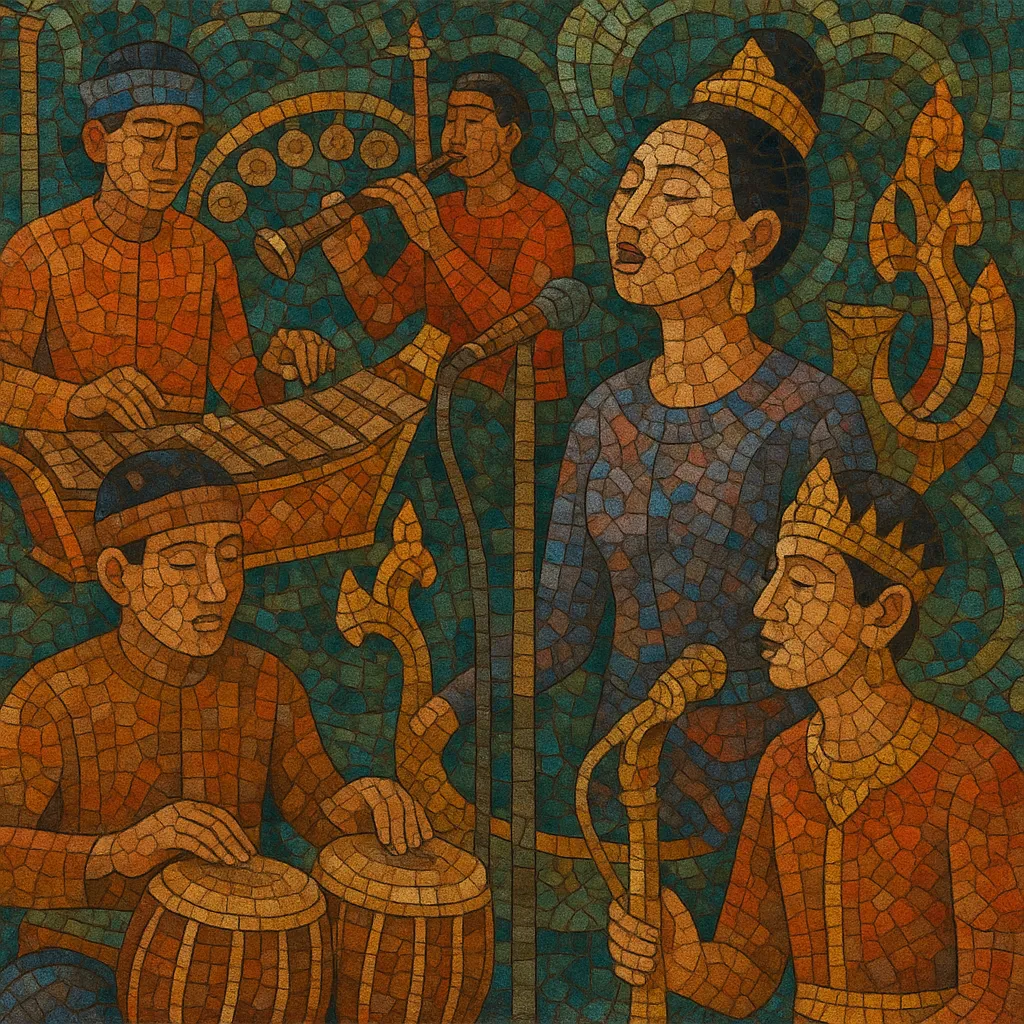Southeast Asian classical music is an umbrella term for the courtly, ritual, and elite ensemble traditions of Mainland and Insular Southeast Asia, including Javanese and Balinese gamelan (Indonesia), Thai piphat, Cambodian pinpeat, Burmese hsaing waing, Lao khene/lanat-centered court ensembles, and Vietnam’s nhã nhạc.
It is characterized by cyclical time (colotomic form), heterophonic textures (simultaneous variations of a core melody), modal frameworks and pentatonic/heptatonic tunings, ornate melodic elaboration, and a highly codified system of instrumental roles. Metallophones, gongs, oboes (quadruple reeds), drums, lutes, zithers, and voice are central timbres. Performance is inseparable from court ceremony, dance, theater, and ritual, producing music that is both meditative and ceremonial, yet rhythmically alive.
The foundations of Southeast Asian classical music emerged from early court cultures and temple rituals of the 1st–2nd millennia CE. Indic (Hindu–Buddhist) and Chinese contacts brought instruments, modal ideas, and ceremonial functions that were naturalized into local aesthetics. By the Angkor period in Cambodia and the classical Javanese courts, large gong–metallophone ensembles and courtly repertories were already established.
Between the 11th and 18th centuries, distinctive court traditions crystallized:
• Indonesia: Javanese and Balinese gamelan codified colotomic cycles, sléndro/pélog tunings, pathet (modal ethos), and elaborate stratified textures. • Thailand and Laos: Piphat-like ensembles developed equidistant heptatonic tuning and powerful quadruple reeds (pi/sralai), with intricate rhythmic modes and dance/theater functions. • Cambodia: Pinpeat served royal ballet and ritual, preserving ancient repertories despite historical upheavals. • Myanmar (Burma): Hsaing waing integrated tuned drums, gongs, and oboe within cyclical, virtuosic forms. • Vietnam: Nhã nhạc (imperial court music) synthesized Chinese court idioms with local instruments and ceremonial formats, flourishing in the Nguyễn dynasty.Colonialism, war, and regime changes challenged court patronage, but community, temple, and theater contexts preserved practice. The 20th century saw documentation by scholars and national cultural institutions, conservatory training, and staged revivals. UNESCO listings (e.g., Gamelan, Nhã nhạc, Royal Ballet of Cambodia) highlighted preservation.
From the late 20th century, Southeast Asian classical music influenced global composition (e.g., Western minimalism) and performance. University gamelan ensembles proliferated worldwide, and master musicians collaborated across genres. Today, traditional courts, cultural ministries, and artists sustain lineages while engaging thoughtful innovation.


